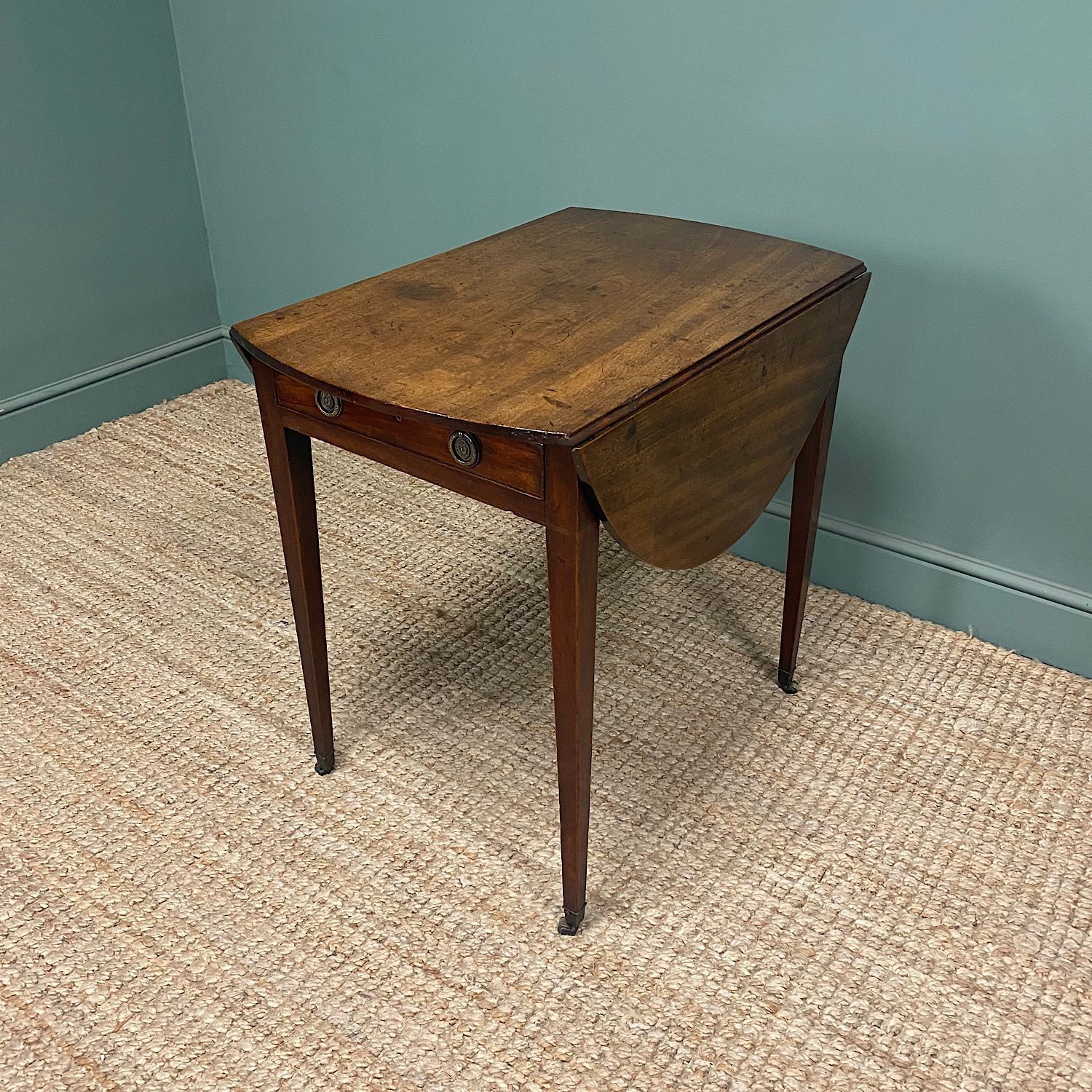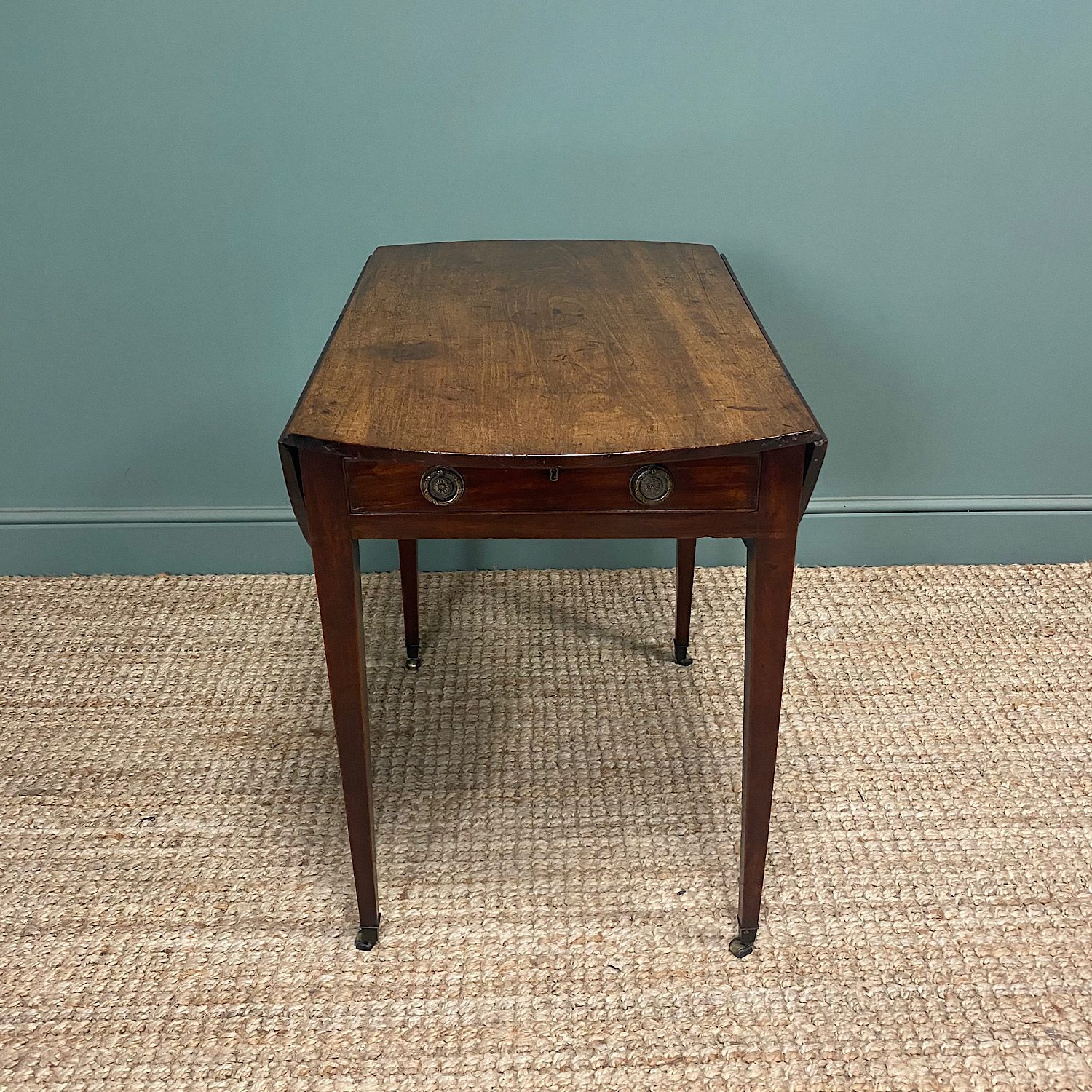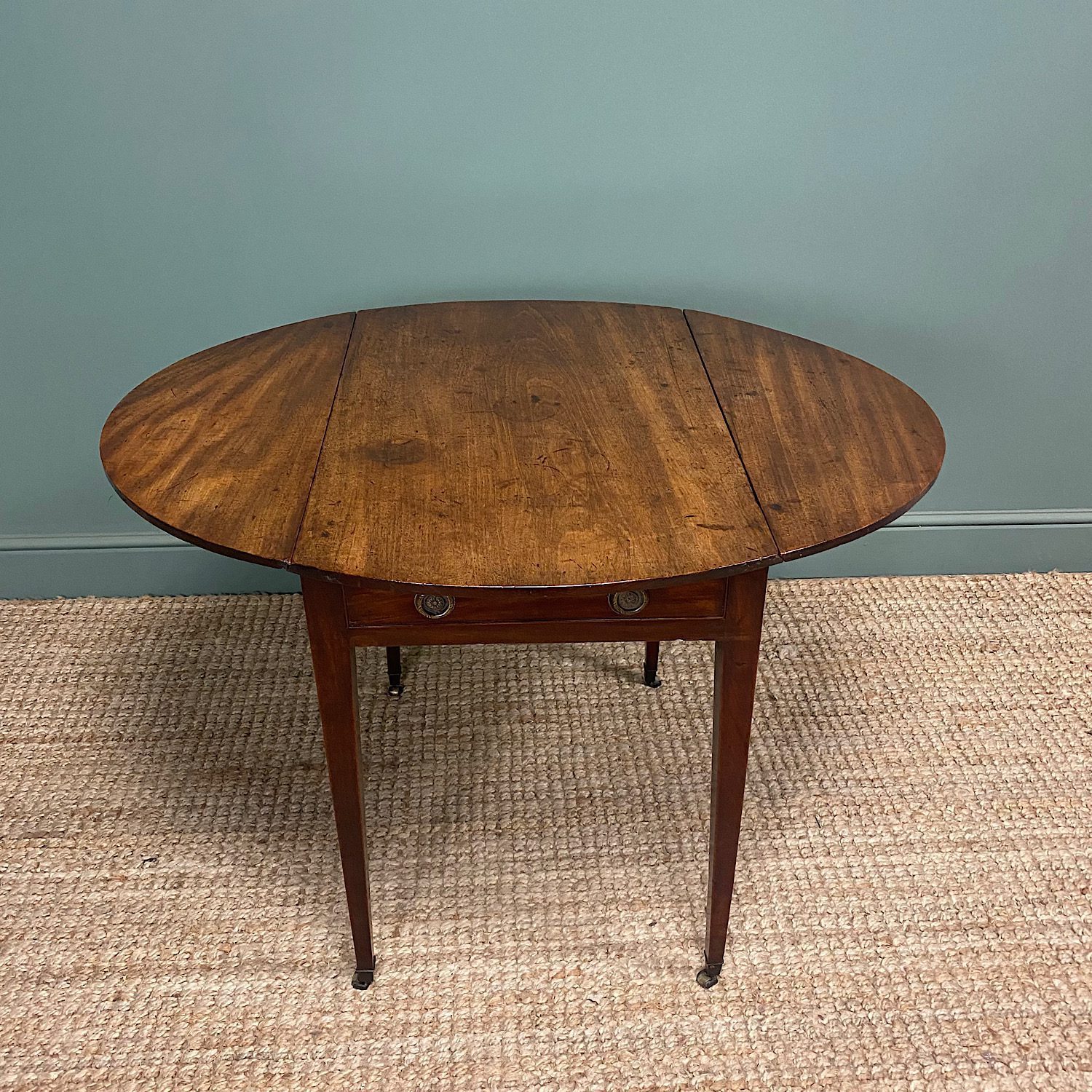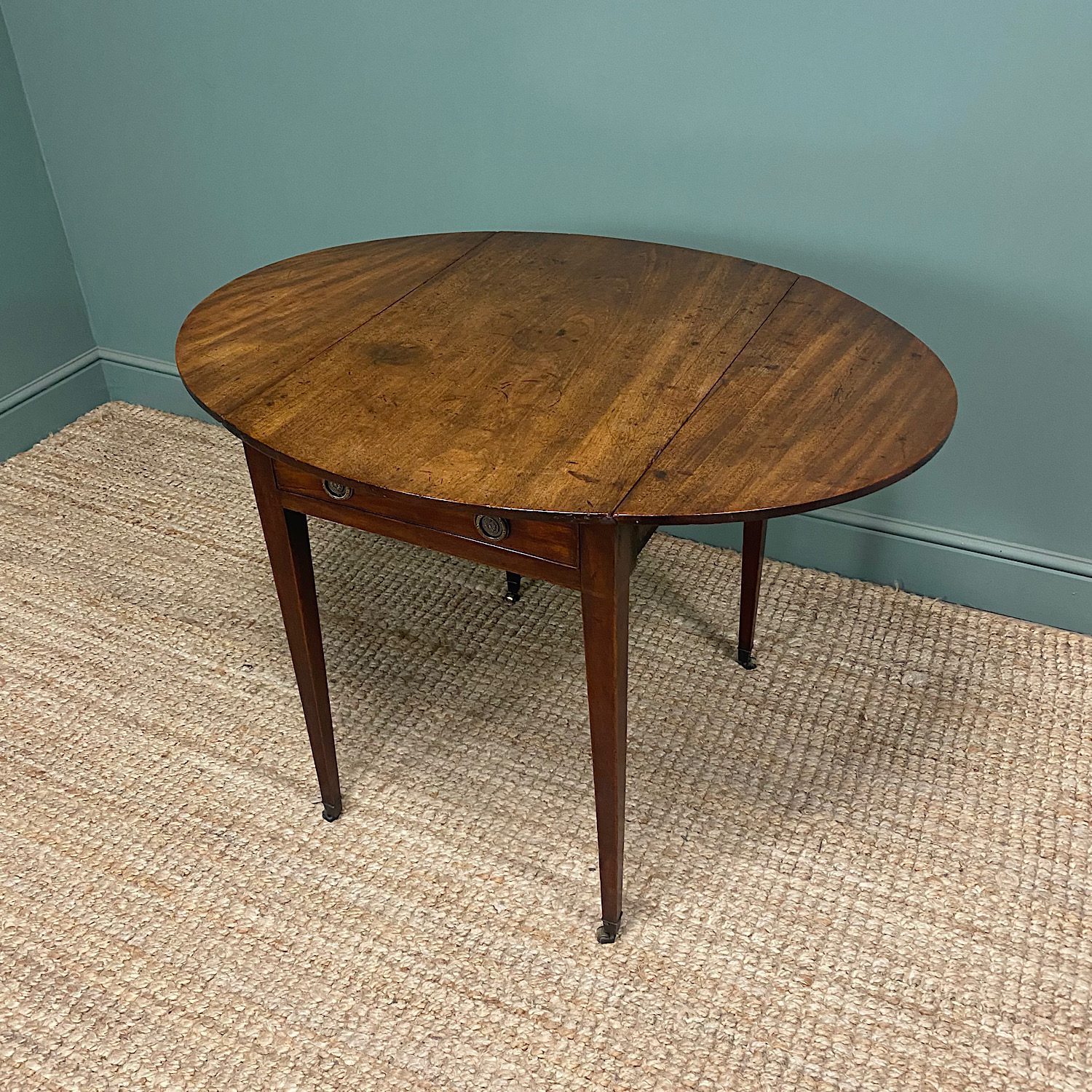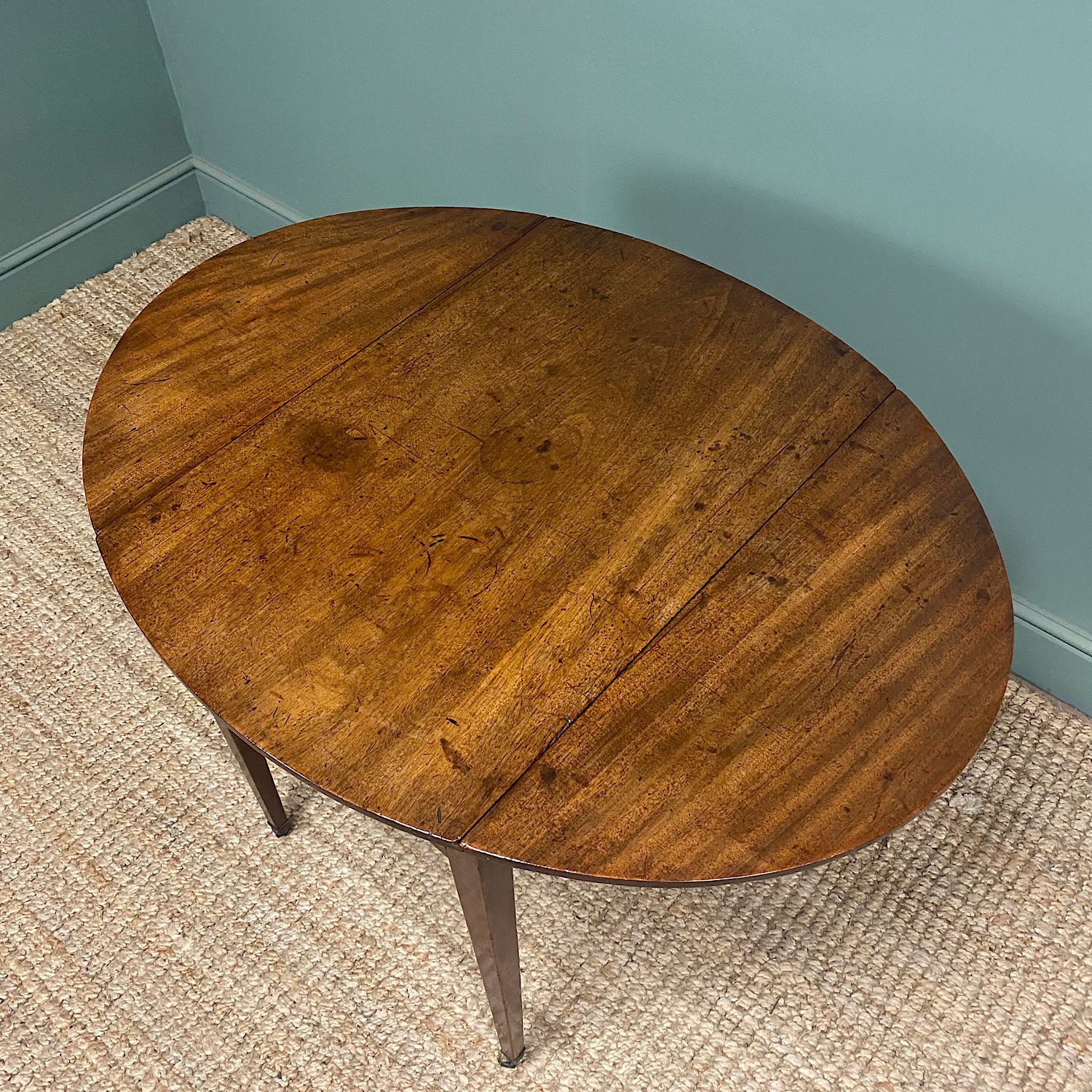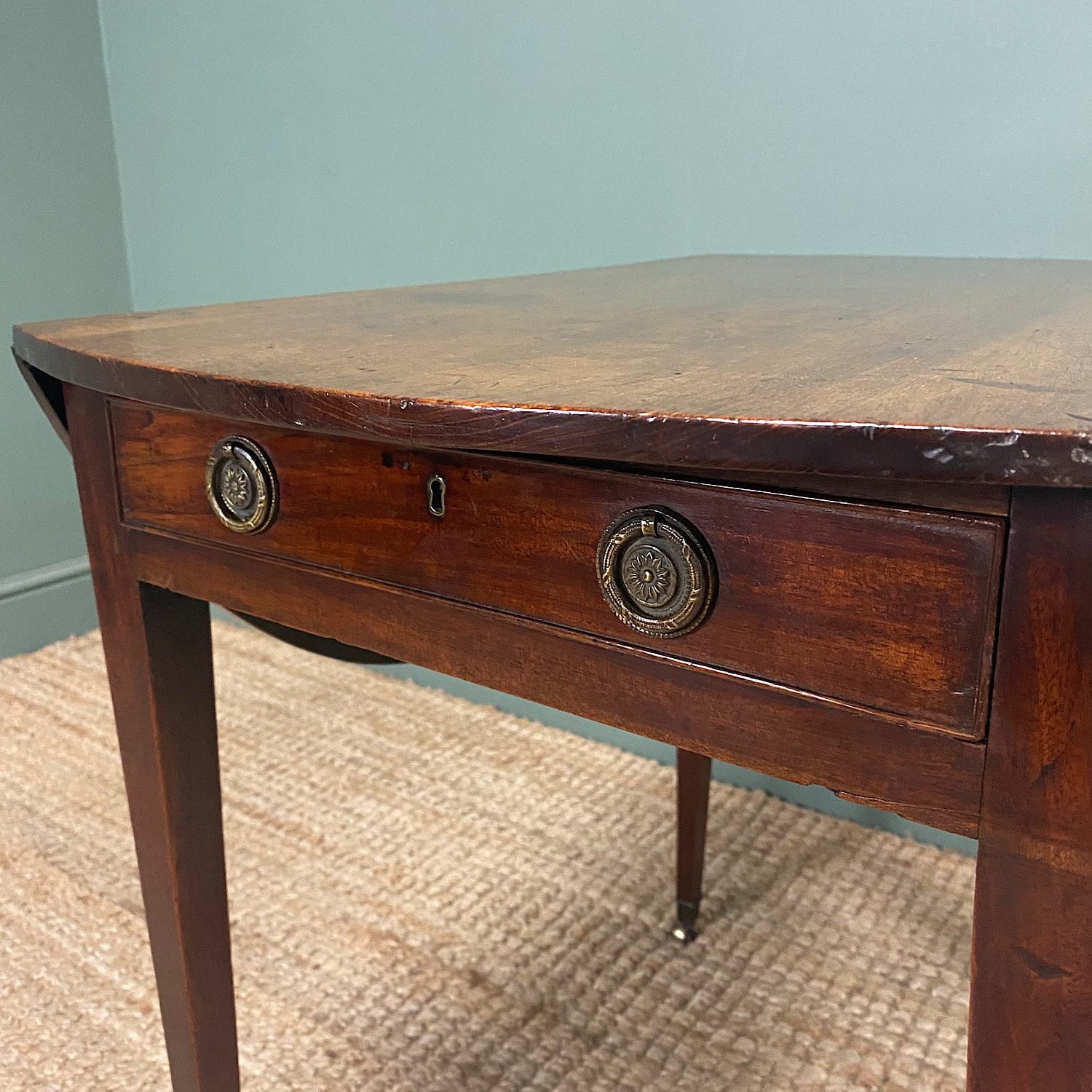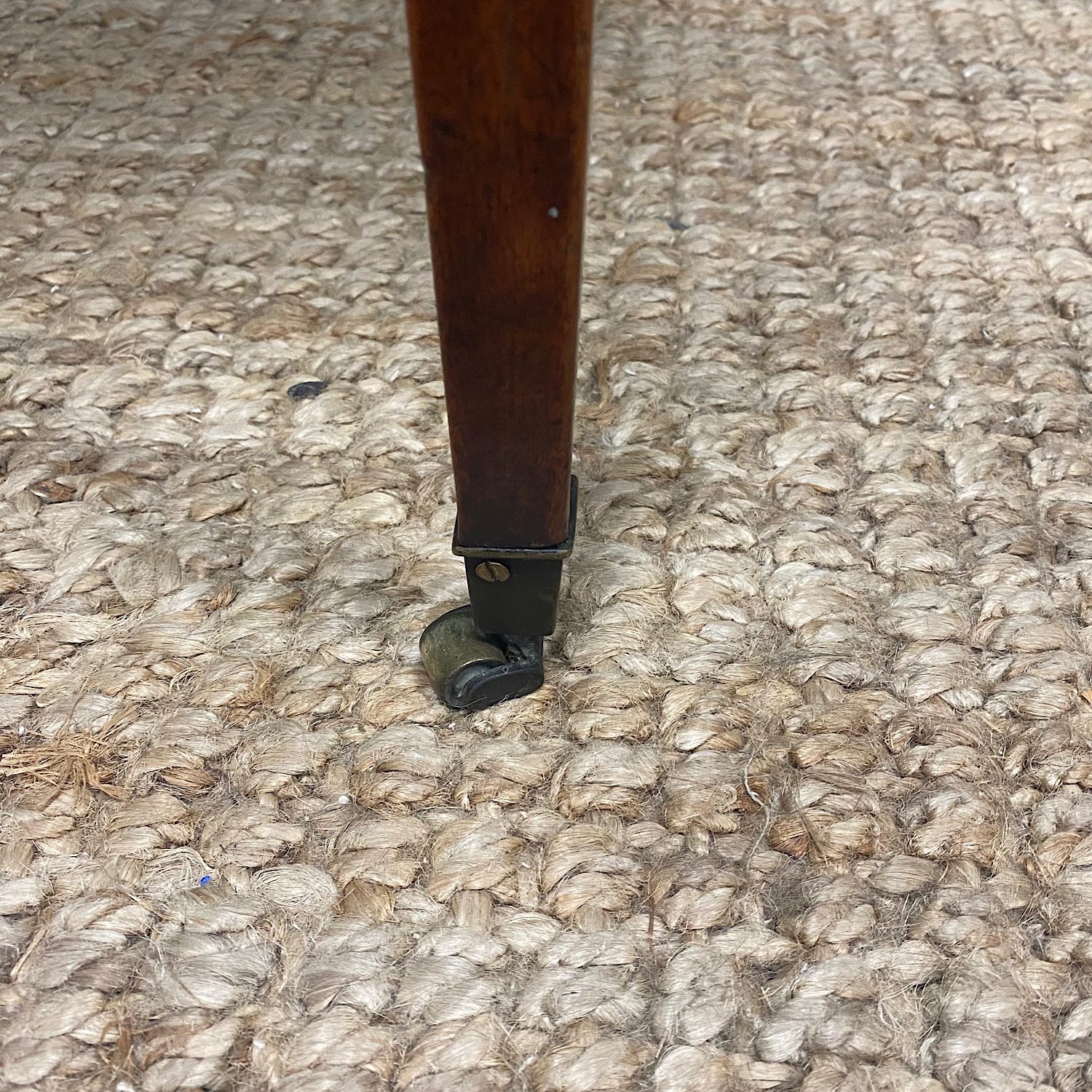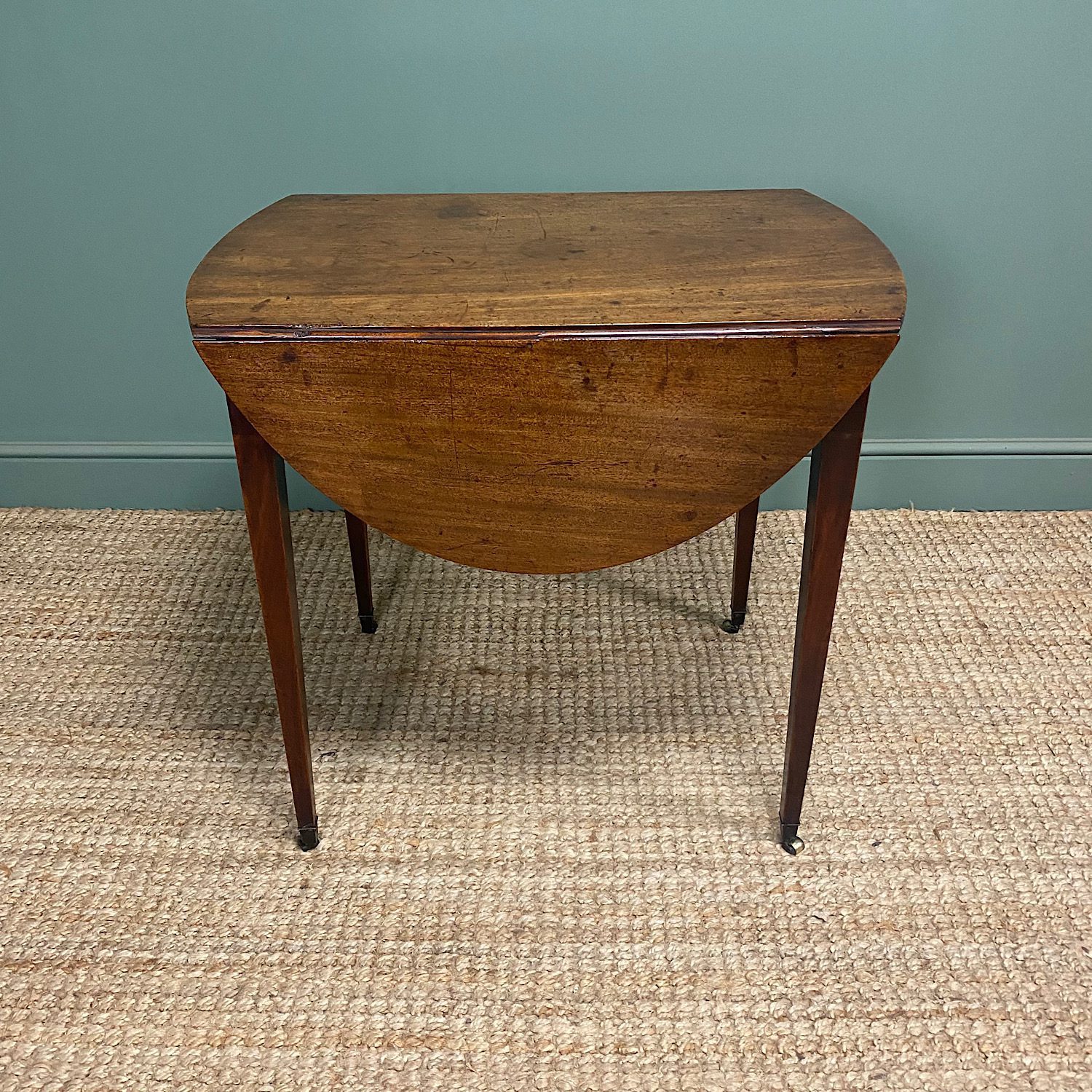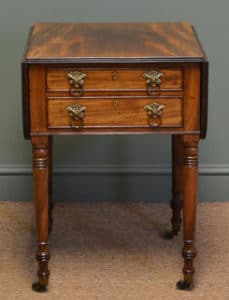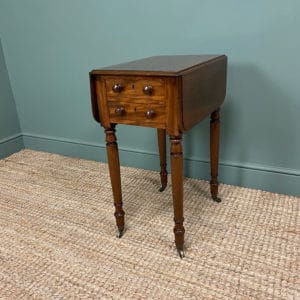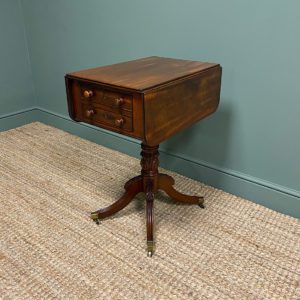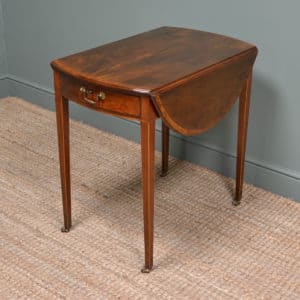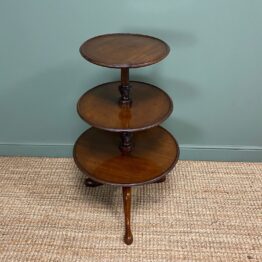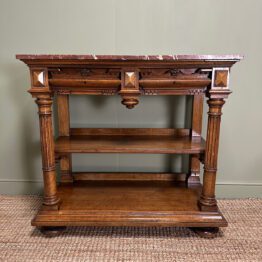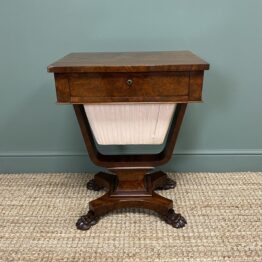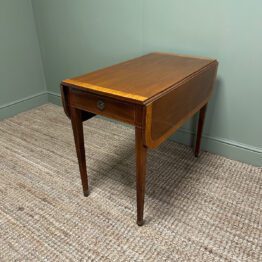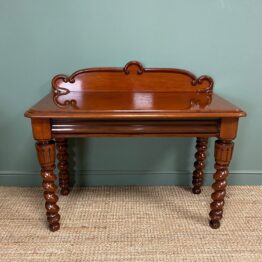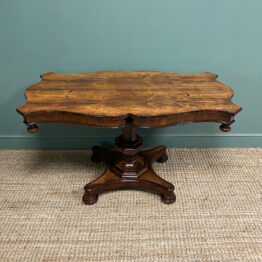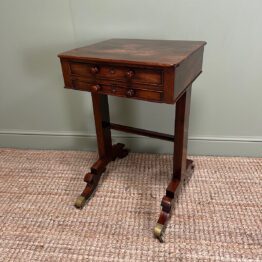Description
The antique Pembroke table is a timeless piece of furniture that exudes elegance and sophistication. Its versatility and classic design make it a sought-after choice for interior decorators and antique collectors alike. Crafted with exquisite attention to detail, a vintage Pembroke table typically features drop leaves, a drawer, and delicate tapered legs, which add a touch of refinement to any space. Whether used as a writing desk, a side table, or a breakfast table, the antique Pembroke table showcases a blend of functionality and aesthetics that stand the test of time.
This Early 19th century Country House Regency Mahogany Antique Pembroke Table / Drop Leaf Table dates from ca.1830 and comes with wonderful charm and character. It has two drop leaves supported by hinges brackets. This lovely regency antique table has a working drawer on one side with decorative handles and a faux drawer on the opposite side. This sits above four tapering legs with brass castors and the Mahogany has aged to a warm shade with a striking grain, good patina, is in very good condition and has been beautifully cleaned using a traditional form of wax finishing.
Approximate Dimensions are:
Height: 71 cm / 28 inches
Width: 76 cm / 30 inches
Length Closed: 51 cm / 20 inches
Length Open: 102 cm / 40 inches
Ref No: 08261
Please click on antique furniture image for larger photo.
Standard One Man Delivery £60 + VAT within mainland England, Scotland and Wales
Our antiques come with a 28 day money back guarantee, see terms & conditions.
Overseas Insured Door to Door Shipments – Quote upon Request
The History of the Antique Pembroke Table
Antique Pembroke Tables are a style of a small table first seen in the 17th Century but became more commonly used in the Georgian period. The Georgian Pembroke Table has small drop leaves on each side that can be opened and supported using small hinged brackets to create a larger table when needed. They are either rectangular or the slightly better models are oval in shape and can come with decorative inlays, including cross-banding or Shell centres. The variety of woods does vary on antique Pembroke tables from Mahogany, Rosewood and Satinwood and they will stand on very fine tapering legs with spade feet. The Pembroke side table was named after the Countess of Pembroke who first ordered and commissioned this table in the late 17th century. This was reproduced by the famous furniture designers Chippendale and Hepplewhite along with Victorian and Edwardian cabinet makers. This is ideal table if you have limited space in your home because of their very practical proportions.

